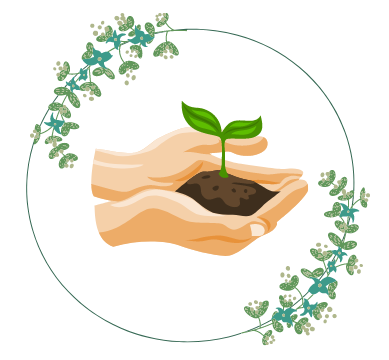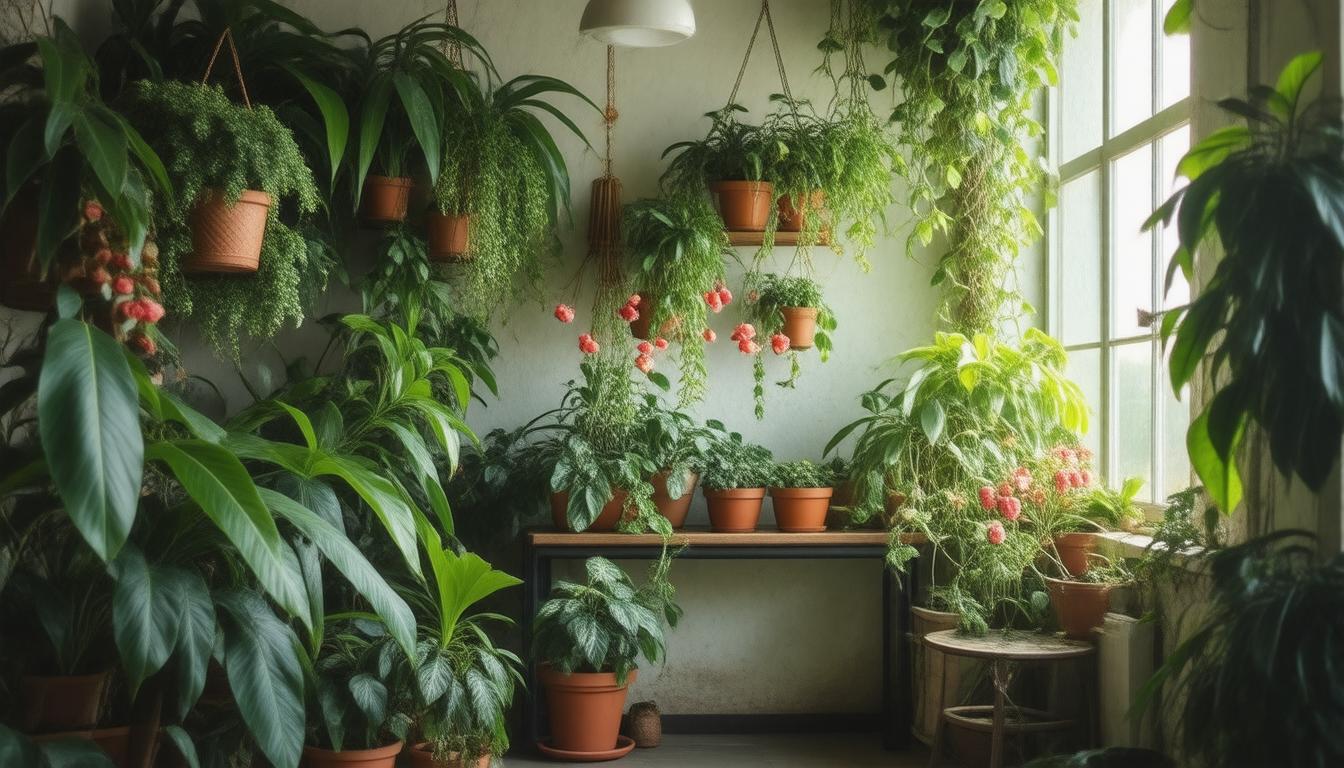Indoor plants can significantly enhance the aesthetic appeal of your home while also providing a multitude of health benefits, such as improved air quality and enhanced mood. However, cultivating a thriving indoor garden requires more than just placing a few pots around the house. In this article, we’ll explore the Top 7 Indoor Plant Tips to Transform Your Home into a Green Oasis, ensuring that your beloved greenery not only survives but thrives in your indoor environment. From selecting the right plants to understanding light and watering needs, we’ll guide you through the essential elements of indoor plant care.
Key Takeaways
- Selecting indoor plants that thrive in your specific space is crucial for success.
- Each indoor plant has unique light requirements that must be understood for optimal growth.
- Proper watering techniques are essential to prevent over or under-watering your plants.
- Choosing the right soil and understanding fertilization needs can significantly impact plant health.
- Creating a humid environment can enhance plant vitality, especially for tropical species.
Choosing the Right Indoor Plants
Creating a lush indoor oasis is easier than you might think, especially when you have the right knowledge at your fingertips. In this article, we’ll explore the Top 7 Indoor Plant Tips to Transform Your Home into a Green Oasis. First, consider your space and light conditions; different plants have varying light needs, so assess how much sunlight each room receives throughout the day. Secondly, it’s important to choose plants that not only thrive in your environment but also fit your lifestyle; if you travel frequently, opt for low-maintenance varieties like succulents or snake plants. Thirdly, don’t forget about potting—select pots with drainage holes to prevent root rot and give your plants a healthy base to grow. Number four on our list is humidity: many indoor plants love moisture, so consider investing in a humidifier or grouping plants together to create a microclimate. Fifth, remember to rotate your plants regularly to ensure they grow evenly. Sixth, incorporate plants that purify the air, such as peace lilies or spider plants, to enhance both aesthetics and wellness in your home. Finally, make it a habit to regularly check for pests and diseases, as early detection can save your green sanctuary from potential damage. Armed with these Top 7 Indoor Plant Tips to Transform Your Home into a Green Oasis, you’re well on your way to making your living space vibrant and inviting.
Understanding Light Requirements
When it comes to creating a lush indoor oasis, understanding light requirements is crucial among the Top 7 Indoor Plant Tips to Transform Your Home into a Green Oasis. Different plants thrive under various lighting conditions, from bright, indirect sunlight to low-light environments. For instance, succulents and cacti flourish in bright, direct sunlight for several hours a day, while plants like snake plants and pothos are more adaptable, finding their niche in shadier spots. By assessing the natural light available in your home and selecting plants accordingly, you not only enhance their growth but also ensure your green oasis remains vibrant and healthy. So, take a moment to observe how the sun moves through your space, and tailor your plant choices to align with those light conditions—it’s one of the simplest yet most effective ways to elevate your indoor garden!
‘The greatest service which can be rendered to any country is to add a useful plant to its agriculture.’ – Thomas Jefferson
Importance of Proper Watering Techniques
When it comes to maintaining a thriving indoor garden, understanding the importance of proper watering techniques cannot be overstated. Over-watering or under-watering can lead to a multitude of issues, from root rot to wilting leaves. To ensure your plants flourish, it’s essential to learn about your plant’s specific water requirements, as each species varies in its need for moisture. Implementing the right watering techniques, such as checking soil moisture levels before adding water and ensuring that pots have proper drainage, can dramatically improve the health and aesthetic appeal of your indoor garden. By mastering these methods, you’ll be well on your way to following the top 7 indoor plant tips to transform your home into a green oasis.
Soil Selection and Fertilization
Soil selection and fertilization are pivotal in successfully transforming your home into a green oasis, which is why they feature prominently in our top 7 indoor plant tips. The right soil provides essential nutrients and promotes healthy root development, while proper fertilization ensures your plants thrive in their new environment. Start by choosing a high-quality potting mix tailored to the specific needs of your indoor plants, as different species may require varying levels of drainage and nutrient content. For instance, succulent and cactus mixes are designed to drain quickly, preventing root rot, whereas tropical plants might appreciate a richer, moisture-retaining blend. Additionally, incorporating organic fertilizers can enhance soil fertility; look for slow-release options that provide a steady supply of nutrients over time. Regularly monitoring the health of the soil by checking its moisture levels and pH will also help maintain optimum growing conditions, ultimately leading to flourishing indoor plants that beautify your space.
Creating a Humid Environment
Creating a humid environment is crucial for many indoor plants, especially those that thrive in tropical climates. Here are some of the Top 7 Indoor Plant Tips to Transform Your Home into a Green Oasis. First, consider grouping plants together, as they release moisture into the air, raising the humidity around them. Additionally, you can utilize pebble trays filled with water beneath your pots; as the water evaporates, it creates a humid microclimate. Another effective method is misting your plants regularly; however, be cautious not to overdo it, as this can lead to mold growth. Investing in a humidifier can also significantly benefit your indoor greenery, especially during dry winter months. Lastly, avoid placing your plants near heaters, as this can dry them out. By following these tips, you can ensure that your indoor plants receive the humidity they need to flourish, thereby transforming your home into a lush, green oasis.
Seasonal Care Tips for Indoor Plants
Creating a lush, green oasis in your home can be a fulfilling endeavor, especially when you implement the top 7 indoor plant tips to transform your home into a green oasis. First, understanding the light requirements of each plant is crucial; some thrive in bright, direct sunlight while others prefer low-light conditions. Second, adjusting watering practices with the changing seasons is essential: in winter, many plants require less water due to lower humidity levels. Third, consider the humidity levels in your home, as dry air, particularly in winter, can harm your plants; invest in a humidifier or group plants together to maintain moisture. Fourth, ensure you’re using the right potting mix; a well-draining, nutrient-rich medium promotes healthy growth. Fifth, regular pruning not only keeps your plants aesthetically pleasing but also encourages new growth. Sixth, rotate your plants periodically to promote even growth on all sides. Finally, be attentive to pests and diseases; early detection and treatment are key to keeping your green oasis thriving. By following these seasonal care tips, your indoor plants will flourish, creating a vibrant and inviting atmosphere in your home.
Frequently Asked Questions
What are the best indoor plants for beginners?
Some of the best indoor plants for beginners include pothos, snake plants, and peace lilies. These plants are low maintenance and can thrive in various indoor conditions.
How much light do indoor plants typically need?
Most indoor plants require bright, indirect light. However, some plants can thrive in low-light conditions, while others, like succulents, need direct sunlight to flourish.
What is the best way to water indoor plants?
The best way to water indoor plants is to check the top inch of the soil. If it feels dry, water the plant thoroughly until excess water drains from the bottom. Avoid overwatering, as it can lead to root rot.
How often should I fertilize my indoor plants?
Indoor plants typically benefit from fertilization every 4-6 weeks during the growing season (spring and summer). In fall and winter, reduce feeding since most plants enter a dormant phase.
What are some ways to create humidity for my indoor plants?
To create humidity, you can mist your plants regularly, group them together, use a pebble tray with water, or invest in a humidifier to maintain optimal moisture levels.




